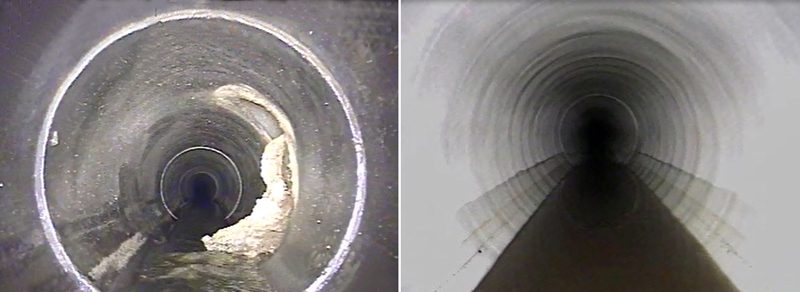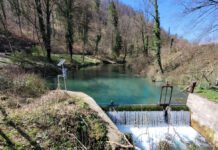
Lanes Group is implementing what is said to be the first project to extensively line highway drainage pipes as part of a Smart Motorway initiative.
The drainage specialist has been commissioned by the Carillion Kier Joint Venture, working for Highways England, to install ultra-violet (UV) liners during the M6 Junction 16-19 Smart Motorway scheme between Crewe and Knutsford, in Cheshire.
It is the first time that roadside drainage pipes will have been extensively lined, instead of being replaced, during a motorway upgrade project in the UK.
The liners give the pipes the additional structural strength needed to meet the 50-year asset life span specified by Highways England.
The Smart Motorway upgrade will tackle congestion and improve journey times by converting the hard shoulder to a permanent extra lane, and introducing variable speed limits to keep traffic moving at a steady speed, preventing tailbacks caused by sudden braking.
In the first phase of the programme, Lanes is lining pipes with diameters of up to 600mm along the northbound carriageway of the M6 between Junction 18 and 19, a distance of 13 km.
Carillion Kier Section Manager Chris Padden said: “UV lining has only been recently established in the UK, so it hasn’t been available for highway improvement schemes of this size until now.
“The only other option is to install new drainage lines in deep trenches, which has additional health and safety risks, takes longer to achieve, and can be more costly than UV lining.
“We approached Lanes Group, as one of the early adopters of UV lining in the UK, and worked with them to confirm the process would meet the required quality specification, and could be integrated with other construction activities.
“The Lanes lining teams have been achieving our targets of lining around 600metres of pipework a week. Their results have been impressive, with some weeks achieving upwards of 900 metres and the process is working well.”
Lanes Group is the UK’s largest independent drainage specialist, and has expertise in a wide range of sectors, including utilities, energy, and rail, as well as highway maintenance and construction.
Simon Bull, Manager of Lanes Group’s Lining Division, said: “We’re pleased that we’re demonstrated UV lining of long sections of highway drainage is both achievable and delivers excellent results.
“Implementing a lining programme of this magnitude, and with these productivity targets, would be demanding in any environment.
“To do it while working in a 3.5-metre-wide space with 135,000 vehicles passing each day just inches away, while working around the needs of other construction colleagues, has been a very interesting challenge indeed.”
Following detailed process planning with Carillion Kier partners, Lanes has deployed two full-time UV lining teams on the project, along with supporting CCTV survey and jet vac tanker teams.
To speed up the lining process, UV liners up to 200 metres in length are being installed.
Simon Bull said: “We’ve had to overcome major challenges, including the need to find buried manholes, refurbish other ones, open up new liner entry and exit points, and empty very large amounts of silt and debris from pipes before liners can be installed.
“The learning curve has been steep and intense, but we have rapidly developed new techniques and procedures that will allow us to replicate this sort of success with future large highway schemes.”
UV cure in place pipe lining (CIPP) is ideally-suited to working in highway environments.
Compared with the only other viable system, hot water CIPP lining, it is faster, needs less equipment and fewer personnel, can be carried out in a more confined space, and generates no toxic water waste.






